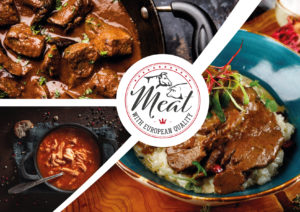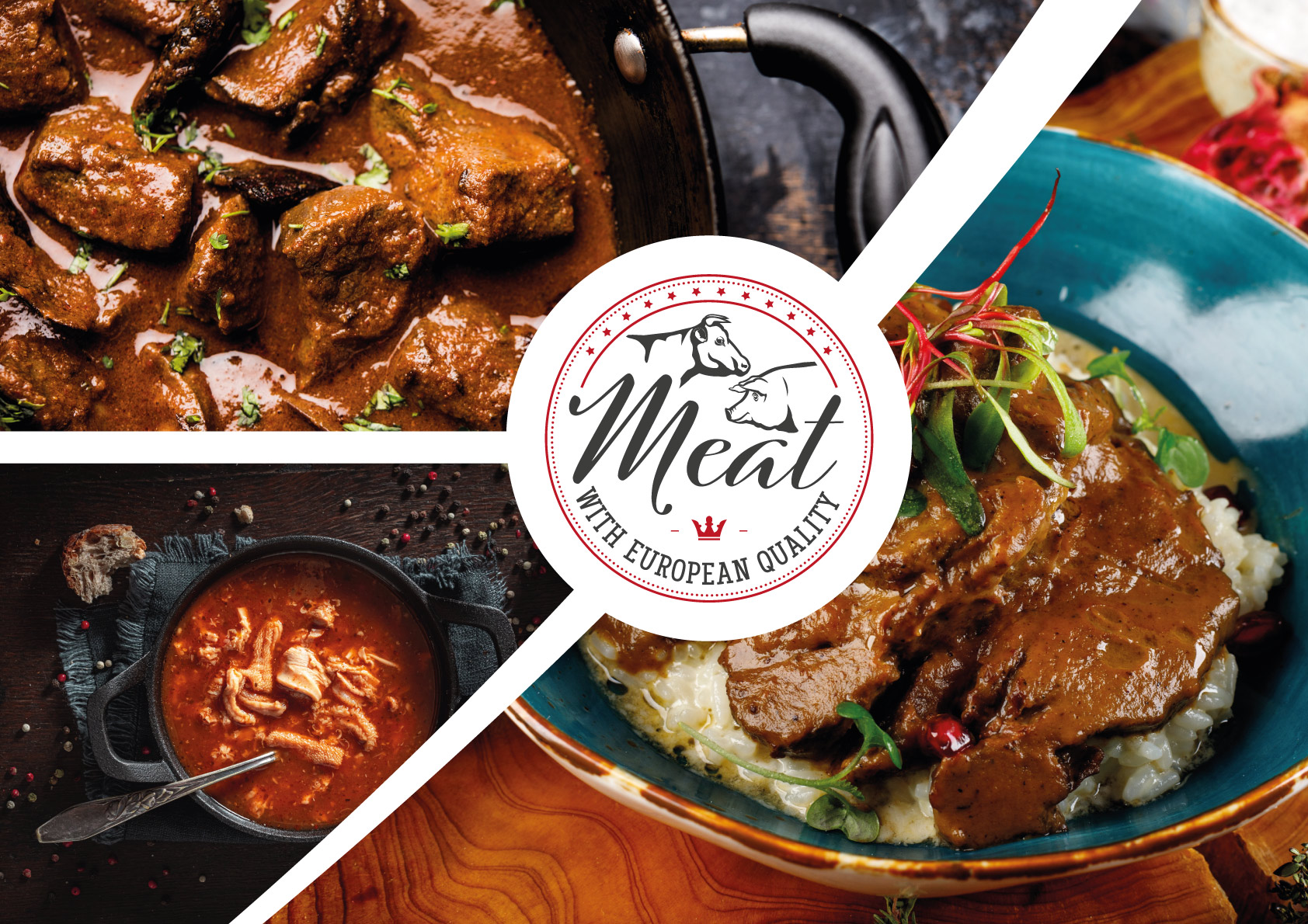The centuries-old tradition of preparing delicious dishes from offal fits perfectly into today’s zero waste ideas. The use of offal is not only a rational culinary approach, but also a way of respecting livestock and ensuring proper nutrition. Offal is a valuable source of a great number of nutrients such as vitamins and amino acids[1]. The liver contains a lot of vitamins, kidneys have a lot of protein, hearts are rich in B and PP vitamins and lungs contain a lot of collagen and elastin[2]. These products can have a beneficial effect on the functioning of the nervous system and on the appearance of the skin and hair. Therefore, using offal in the kitchen combines the pleasant with the useful – dishes made of European offal are not only a rational solution that is good for the environment, but also a culinary adventure worth experiencing. Livers, kidneys, tripe, cheeks and a wealth of pâtés are just a few examples of the many possibilities.
One dish worth mentioning here is beef cheeks. Cheeks, whether pork or beef, are extremely popular in French cuisine, which is renowned for its exquisite taste. Beef cheeks are usually served with a range of tender vegetables and herbs such as carrots, onions, celery, cloves, cinnamon and fresh thyme[3]. The slow marinating and cooking process makes the dish literally melt in your mouth. France stands out with its great love for offal. Apart from cheeks, veal offal is also popular – stuffed hearts or marinated kidneys. These are very sophisticated dishes, usually accompanied by abundant delicate herbs and the chef’s outstanding culinary skills.
The further east you go, the more popular offal soups become. In Poland, the most popular is tripe, a soup whose characteristic taste is based on beef stomachs cut into thin strips. Pork stomachs may also be used. Tripe was a dish served to kings in the 14th century and its flavour variations can be found all over Europe[4]. In the Polish version, tripe is distinguished by its strong flavour as it is served spicy, with pepper, nutmeg, marjoram, ginger and ground paprika[5]. In the Balkans, tripe is served with dairy products, garlic and hot peppers. In Romania this dish is called Ciorbă de burtă, while in Bulgaria шкембе чорба – “shkembe chorba”.
Another type of offal popular in European cuisine is liver. Glazed, fried in butter, with onion or parsley – its variations can be found in every kitchen. Europeans have always known that the liver is something worth consuming. Today, thanks to science, we know that liver is a great source of iron, vitamins, minerals and protein[6]. French cuisine specialises in the delicate taste of veal liver without strong spices[7]. Polish cuisine, on the other hand, specialises in pork liver fried to a high degree with added onions and apples. Nor should we forget German cuisine, where liver tastes great in a soup called leberklosse.
Offal can also be served as quick-to-eat preparations. Europe has been famous for its pâtés for centuries. These products were originally served in the Middle Ages for special occasions such as weddings or official visits[8]. Over time, the dish has gained popularity across the continent. The homeland of pâtés is France, and the name pâté itself comes from French and refers to the paste from which pâtés are made. One in four French people eat pâté at least once a week, while 68% of French people eat pâté at least once a month[9]. Americans are not far behind – according to some analyses, the value of pâté sold in the US is $1.1 billion and growing[10]. Pâtés are also very popular as a sandwich spread in Scandinavia, known as leverpostej. In central and eastern Europe pâté is also eaten in a form similar to sausage – called ‘Leberwurst’ in Germany and Austria and ‘pasztetowa’ in Poland. In America this product can be bought under the name liverwurst.
European offal is not only a great source of vitamins, minerals and protein[11], but also has many culinary uses with a very rich and long tradition. It’s worth discovering these flavours for yourself, as incorporating offal into your everyday cooking is a non-obvious way to improve your diet. The options are endless and exquisite French dishes or easy sandwich spreads are just an example.

- [1] http://bc.wydawnictwo-tygiel.pl/public/assets/102/Przegl%C4%85d%20wybranych%20zagadnie%C5%84%20z%20zakresu%20przemys%C5%82u%20spo%C5%BCywczego.pdf
- [2] https://kuchnia-marty.pl/podroby-wykwintne-danie-czy-produkt-z-nizszej-polki/
- [3] https://www.ifrancja.fr/podroby/
- [4] https://www.tasteatlas.com/flaki
- [5] https://www.przepisy.pl/przepis/flaki-wolowe-1
- [6] https://www.healthline.com/nutrition/why-liver-is-a-superfood
- [7] https://www.tasteatlas.com/most-popular-offal-dishes-in-france
- [8] https://www.craftpate.co.nz/history
- [9] https://alexianpate.com/archive/pate-rendezvous/a-brief-history-of-pates-terrines
- [10] https://www.grandviewresearch.com/industry-analysis/pates-market
- [11] https://www.ncbi.nlm.nih.gov/pmc/articles/PMC6721235/
